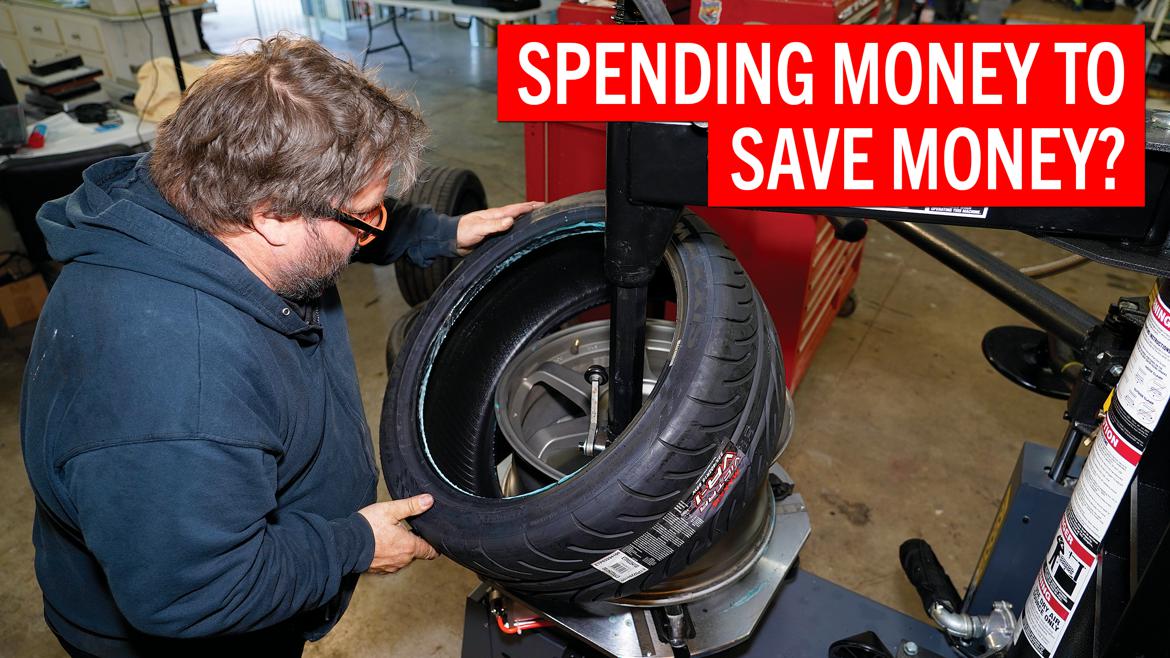Here's something I wrote up a while back, I won't claim that it's 100% accurate at this point, but it should give you a good idea of what you're up against.
Okay, well first you have to understand what it is about your car that's not allowing you to feel the car, and prevents it from giving you that feeling of control. That comes down to predictability.
The two huge things about a fox-chassis Mustang that kill predictability are the chassis flex and the improperly located (i.e. "floaty") rear end. The first is relatively straight-forward to fix; have some full-length subframe connectors welded in. The second part is more involved, as it depends on how much improvement you can afford. Lastly, the front geometry has a lot of bump-steer and positive camber gain under compression, neither of which are confidence inspiring.
The core of the axle location problem is the geometry used by the upper control arms. As the axle goes through it's range of motion, those arms need to effectively twist relative to their mount points, and to allow for that twist, very soft rubber bushings are used. Because soft bushings are used, the effective length of the UCAs is variable, which means that they don't create a fixed triangle, and with no fixed triangulation, the rear end can move side-to-side under load.
So, how to fix that? You have two basic options. One is to replace the UCAs with aftermarket units that still allow for twist, but don't change in length, i.e. spherically bushed (aka "solid") UCAs. This is by far the cheapest option, however you're still left with the undesireable geometry of the stock 4-link, so it's also the least ideal. The second option is to replace the UCAs with other control arms that take over their "jobs". The most common way to do this is with a torque arm conversion (TA). With a TA, instead of having two arms that are both responsible for lateral axle location and prevention of axle wrap, you have one arm dedicated to each of those jobs: the torque arm prevents axle wrap, and a panhard bar or watt's link is used to prevent lateral movement. Another way to do this is to go with Steeda's 5-link setup, which still uses upper control arms, but totally changes their geometry (they're much longer and the axle-side mounts are relocated) and also adds a panhard bar; or you can replace the entire SRA with the IRS unit from a '99-'04 Cobra (at which point you then have to deal with the necessary upgrades for that).
So, the continuation of that is the front end of the car.
The two big problems with the Mustang front end are the lack of adjustability in alignment and the geometry of the A-arm, especially relative to the steering rack.
Lowering only makes that second issue worse, which is why my first question anytime someone wants to lower their car is "are you doing it for looks, or do you want to do it right?".
You can get a serious increase in front bite just by dialing in a proper performance alignment... which pretty much requires CC plates to get.
After that, you're really looking at changing the angle of the A-arms. Stock, the A-arms in a Mustang slope slightly upward from k-member to spindle. Lowering the car only increases that upward angle. The huge problem with that is that it means that when the suspension compresses (like it does on the outside wheel while cornering), the arc that the ball-joint takes causes it to come closer to the body, which means you gain positive camber. NOT GOOD. To avoid that, you need to have the A-arm set up so that as the suspension compresses, the balljoint gets further way from the body... ideally at full compression, the A-arm should be parallel to the ground (putting the balljoint at it's point in travel furthest from the body); that means that at rest, the A-arms should actually slope slightly downward from the k-member to the spindle.
The problem with that is how to accomplish it! The easiest way I know of is the Steeda X2 balljoint combined with a spring spacer (or CO conversion). The balljoint is taller, which pushes spindle side of the A-arm closer to the ground. Unfortunately, because of the inboard spring setup of the Mustang, ride-height is determined by the A-arm location, so by doing this you end up lowering the car the increased height of the new balljoint, so you need a taller spring to compensate (ride height with coil-overs is isolated from the A-arm location, so this is not necessary should you make the conversion). Of course, once that's done, you've changed the roll-center height, which means you need to change your swaybar to keep the balance neutral... and on and on and on, hahaha.
That's why when people want a cheap way to make their car handle, I NEVER suggest replacing the stock springs. For all the benefits of lowering the car, there are too many other problems that get increased and make the overall change not worth it.
My recipe for cheap handling boils down to good tires, the best non-adjustable shocks you can afford, FL-SFCs, spherical-bushed UCAs (replace with a panhard bar if you can afford the ~$100 difference), and CC plates.










































